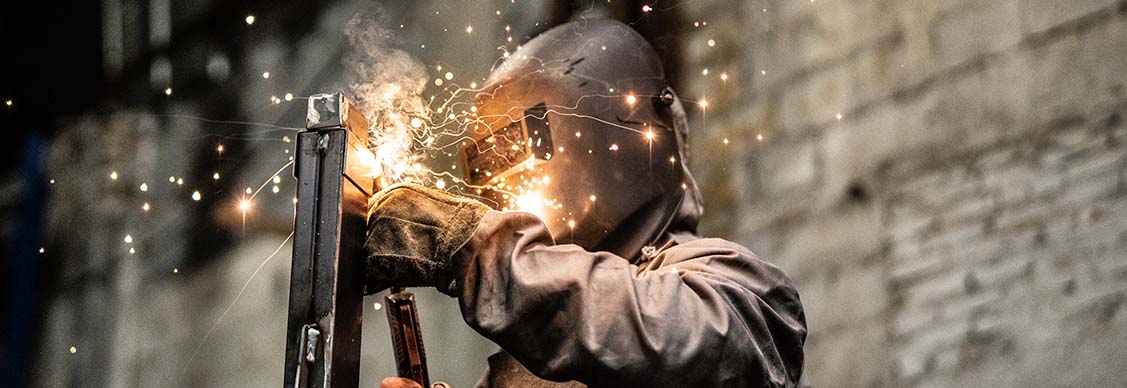How a supply chain rethink is bolstering industrial real estate
Manufacturing firms’ focus on regionalization as part of risk management strategy
From General Motors to Intel and US Steel, U.S. companies increasingly have been returning their manufacturing operations stateside.
More than 1,800 companies re-shored their productions last year, according to a report from the non-profit Reshoring Initiative.
But this isn’t really a story of reshoring, says Richard Thompson, international supply chain director at JLL.
The COVID-19 pandemic, which snarled supply chains worldwide, prompted manufacturers to reconsider their sourcing strategies and make them better suited to shocks.
“This is more a story of risk management,” Thompson says. “The pandemic exposed how fragile our global supply chain was when reliant on one region. A more regionalized model allows companies to be nimbler when problems arise.”
This is creating a boom for industrial real estate, which was already one of the hottest commercial property sectors in the last decade.
While manufacturing has typically not been one of the most active industries for leasing activity in the U.S., JLL’s Industrial Demand study shows that activity during the past two years has picked up across the entire spectrum as companies (mainly automotive) continue to diversify their footprint—a trend researchers expect to continue for years.
Demand for regionalization continues
A study of transcripts of S&P 500 companies by S&P Global Market Intelligence found a rise in the number of mentions of regionalizing supply chains during the last two years. While talks were at an all-time high in 2020, the research found that conversation activity peaked again at the end of 2022.
“Companies are trying to diversify risk, and one way to do that is to manufacture or source in more than one country or with more than one company,” Thompson says. “Another reason is that companies want to limit complexity in transit times and freight costs. The closer your manufacturing or sourcing operations are to the end customer, you gain the benefits of lower freight costs and quicker transit times because you are not moving product as far.”
The impact is reaching markets across the globe.
Take India, where Apple recently announced plans to spread manufacturing around multiple countries to reduce the chances of supply chain interruptions. The technology company has already shifted iPhone production to India—thanks to its competitive workforce—with plans to triple its output in the next three years and is moving production of its MacBook from China to Vietnam by May 2023.
The boom being seen in commercial real estate isn’t just surrounding manufacturing leasing and greenfield development.
“The trickle-down effect is also something to watch,” Thompson says. “When a company moves manufacturing to a new market, you start to see suppliers spring up to serve that new plant and then distribution facilities. New manufacturing is a big driver of economic activity.”
The next wave
While the COVID-19-induced supply chain bottlenecks and port jams forced manufacturers to reevaluate their offshore production capabilities, the need for advancement in manufacturing is furthering demand, according to JLL’s Industrial Demand 2022 study.
Specifically in the Americas, the report shows that the push for the electrification of automobiles, coupled with the necessity to move the production of semiconductors to America’s shores, has spurred activity. According to the report, there are 19.35 million square feet of manufacturing demand on the market. And JLL Research is currently tracking more than 77 million square feet of manufacturing facilities now being built throughout the country.
Chandranath Dey, India Head of Operation and Business Development in the Logistics & Industrial team, says companies like Apple moving manufacturing operations to the country have considerably impacted land sales and leasing activity. In addition, the country has seen significant investment from various industries and countries, ranging from metal manufacturers in Luxembourg and Switzerland to Asian automotive and electric vehicle manufacturers.
Dey calls manufacturing leasing the “new animal,” as the country cannot build ground-up space fast enough to satisfy investor appetite. India has witnessed the highest greenfield in manufacturing investment (16.3 billion between January 2020 and July 2021) intentions among MITI-V countries (Malaysia, Indonesia, Thailand, India, and Vietnam).
Last January through July, Dey says they saw about 18 to 20 million square feet of releasing in the manufacturing domain only, leaving out manufacturing land acquisitions and such.
Dey points to a list of government initiatives that have set the country up for success in this burgeoning industry. Some of those initiatives include India now having the lowest corporate taxes in Southeast Asia for manufacturing units and an incentive programming centered around production.
President Biden’s Build Back Better Act and the 2022 Inflation Reduction Act have also been considerable drivers in companies bringing manufacturing operations back to the U.S., says Trevor Ragsdale, U.S. Head of JLL’s Industrial Occupier Services.
“These legislations coupled with rising energy costs in Europe, have made the U.S. the priority focus for EV and clean energy investments,” Ragsdale says.
